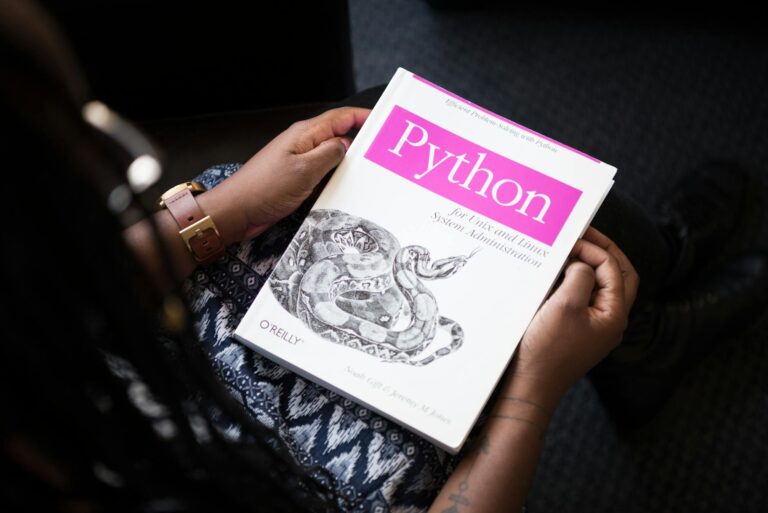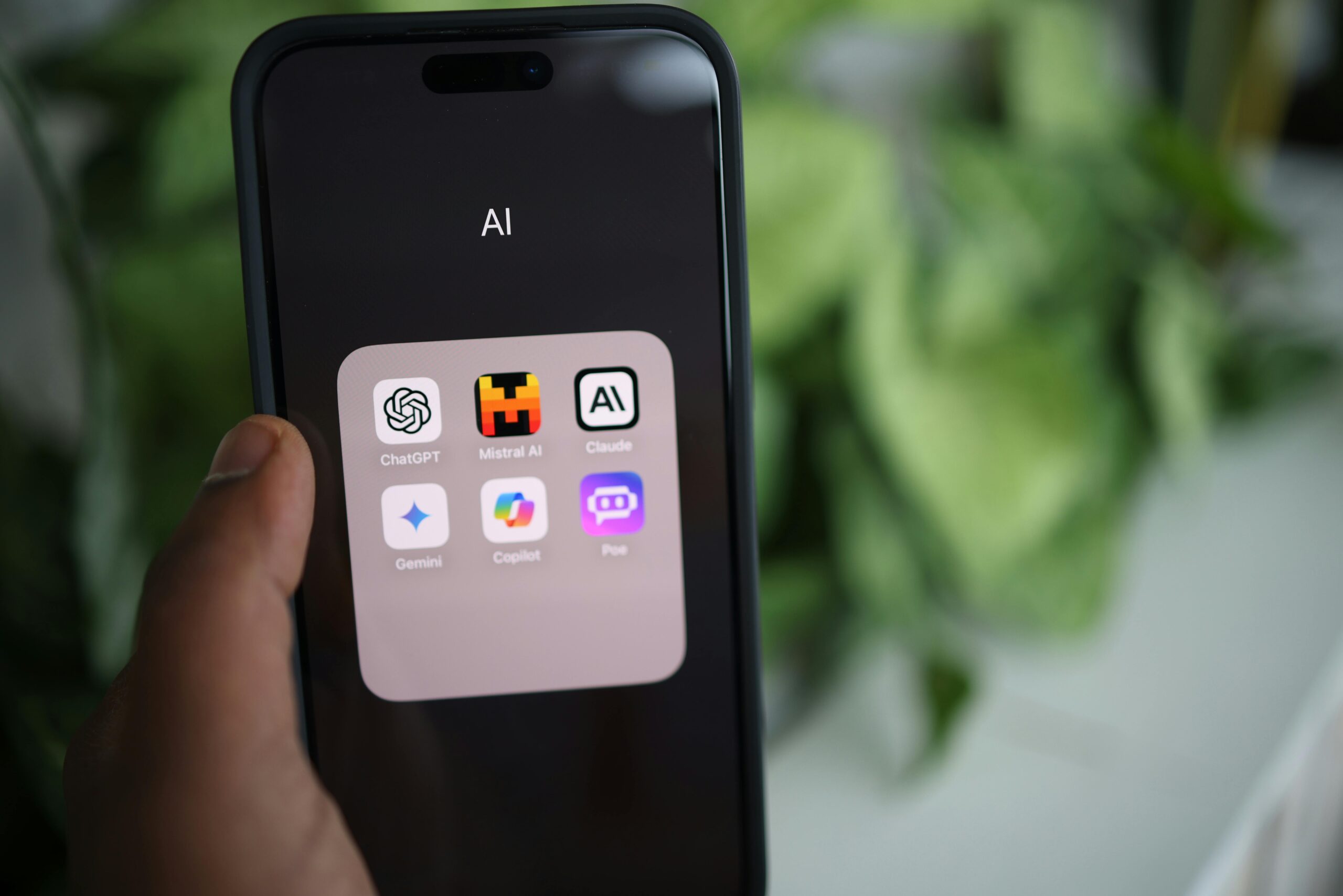2025 Tech Trends for Web, AI, Mobile and Business Success
2025 Tech Trends: Your Playbook for Web Development, Mobile Apps, AI, and Digital Transformation
Estimated Reading Time: Approximately 13 minutes
Key Takeaways
- AI Automation is Central: AI-powered automation will redefine business efficiency, customer service, and workflow optimization, moving beyond simple task automation to intelligent delegation.
- Performance and Modularity Drive Web Development: Next.js and React will continue to lead in building high-performance, AI-integrated web applications, emphasizing speed, scalability, and modular architectures like headless CMS and micro frontends.
- Cloud-Native and DevOps for Scale: Serverless architecture is becoming the default for scalable, cost-efficient backends, while advanced CI/CD automation and DevOps best practices ensure rapid and reliable software delivery.
- User Experience is Paramount: Modern UI/UX design prioritizes intuitive, accessible, and hyper-personalized interfaces, with design systems ensuring consistency and efficiency across platforms.
- Accessible Innovation for Small Businesses: Powerful, cost-effective tech stacks, including cloud-native solutions and AI tools, enable small businesses and startups to leverage advanced trends for smart scaling and competitive advantage.
Table of Contents
- The Grand Digital Transformation in 2025: A Holistic View
- Web Development in 2025: Intelligence, Performance, and Modularity
- Mobile App Innovation 2025: Cross-Platform Excellence and AI Integration
- Cloud Computing and DevOps 2025: Efficiency and Automation at Scale
- AI Automation for Businesses: Intelligent Delegation and Efficiency
- Modern UI/UX Design 2025: Intuitive, Accessible, and Adaptive
- Tech Innovation for Small Businesses: Leveraging the Future Today
- Looking Ahead: The Interconnectedness of 2025 Tech
- Performance Optimization Techniques: A Critical Driver
- The Role of AITechScope in the 2025 Digital Landscape
- Conclusion: Embracing the Future with Intelligence and Agility
- FAQs About 2025 Tech Trends
The digital landscape is in a constant state of flux, evolving at an unprecedented pace. As we step into 2025, a new wave of technological advancements is not just on the horizon; it’s actively reshaping how businesses operate, how users interact with digital products, and how developers craft the future. From the subtle hum of AI algorithms optimizing daily tasks to the robust infrastructure of serverless cloud solutions, understanding these 2025 tech trends is no longer optional—it’s essential for survival and growth.
This comprehensive guide dives deep into the transformative forces that will define the year ahead. We’ll explore the cutting edge of web development trends, the rapid innovations in mobile app development 2025, the strategic imperatives of cloud computing and DevOps, the pervasive impact of AI automation for businesses, and the evolving principles of modern UI/UX design. Whether you’re a business leader strategizing for the next quarter, a developer seeking to future-proof your skills, or a tech enthusiast eager to grasp what’s next, this playbook distills complex trends into actionable insights. Discover how today’s tech can accelerate growth, improve performance, and fundamentally transform the way companies operate.
At AITechScope, we’re at the forefront of this revolution, specializing in AI-powered automation, n8n workflow development, and business process optimization. Our mission is to help businesses leverage cutting-edge AI tools and technologies to scale operations, reduce costs, and improve efficiency through intelligent delegation and automation solutions. Let’s embark on this journey to decode the future of technology.
The Grand Digital Transformation in 2025: A Holistic View
The concept of digital transformation isn’t new, but in 2025, it graduates from a buzzword to a fundamental operational paradigm. It’s about more than just adopting new tools; it’s about re-imagining business processes, customer interactions, and employee workflows with technology at their core. For enterprises and startups alike, this means a strategic approach to technology adoption that focuses on integration, scalability, and measurable impact.
Digital Transformation Strategies for Sustainable Growth
Successful digital transformation strategies in 2025 prioritize agility and user-centricity. It’s no longer about a one-off project but a continuous cycle of innovation and adaptation. Companies are focusing on:
- Data-Driven Decision Making: Leveraging AI and analytics to extract insights from vast datasets, enabling proactive rather than reactive strategies.
- Hyper-Automation: Integrating AI, RPA (Robotic Process Automation), and intelligent workflow tools to automate complex, multi-step processes across departments.
- Cloud-Native Everything: Building and deploying applications directly in the cloud, maximizing scalability, resilience, and cost-efficiency.
- Employee Empowerment: Providing employees with intuitive, AI-enhanced tools that streamline their work, freeing them from repetitive tasks and allowing them to focus on higher-value activities.
For small businesses, digital transformation on a budget is entirely achievable. As highlighted in research, focusing on “7 Steps Small Companies Can Start Today” involves prioritizing low-cost, high-impact changes like adopting cloud-based CRM, automating customer service with chatbots, or building a fast marketing site with technologies like Next.js.
Enterprise Digital Adoption: Overcoming Challenges
Enterprise digital adoption faces unique challenges, from legacy systems to organizational inertia. In 2025, the focus is on phased migrations, microservices architecture, and robust change management. The goal is to move legacy applications to the cloud without disruption, often through incremental modernization rather than a “rip and replace” approach. This often involves strategies for cloud migration strategy that prioritize business continuity and minimal downtime.
Web Development in 2025: Intelligence, Performance, and Modularity
Web development is undergoing a profound transformation, moving towards more intelligent, performant, and composable architectures. The era of static, monolithic websites is giving way to dynamic, AI-powered, and highly optimized web experiences.
AI-Powered Web Apps: The New Standard
The integration of AI into web applications is no longer a futuristic concept; it’s a foundational expectation. In 2025, AI-powered web apps will leverage machine learning for personalized content delivery, predictive analytics, intelligent search, and dynamic UI adjustments. Imagine websites that adapt their layout and content based on user behavior in real-time, or e-commerce platforms that anticipate customer needs before they’re even explicitly stated.
For SaaS products, even “3 Low-Effort AI Features That Delight Users” can make a significant impact. These might include personalized recommendations, smart search filters, or AI-driven content generation assistance, seamlessly integrated into the user workflow. This is where companies like AITechScope, with their expertise in AI-powered automation, play a crucial role in helping businesses integrate these intelligent features effectively.
Next.js and React Performance: The Speed Revolution
Performance remains paramount. In 2025, user patience for slow-loading websites is non-existent. Next.js and React performance optimization will be at the forefront of web development strategies. Frameworks like Next.js, with their built-in optimizations for server-side rendering (SSR), static site generation (SSG), and incremental static regeneration (ISR), are becoming the go-to choice for building fast, scalable web applications.
Practical tips for “5 Simple React Performance Fixes That Reduce Page Load by Seconds” will be standard practice, including lazy loading components, optimizing images, using memoization, and efficient state management. For “Next.js for Small Businesses,” building a “fast marketing site in one weekend” with optimized performance will be a common goal, demonstrating how modern frameworks democratize high-performance web development. This focus on performance aligns directly with the goal of improving user experience and SEO rankings, as search engines increasingly favor fast-loading sites.
Headless CMS and the Composable Web
The shift towards decoupled architectures continues with the widespread adoption of headless CMS. Separating the content management layer from the presentation layer provides unparalleled flexibility, allowing content to be delivered to any front-end (web, mobile, IoT). For those still tied to WordPress, “WordPress Without the Bloat: Lightweight Plugins That Actually Help SEO” will be crucial, enabling them to enjoy some of the benefits of a modern tech stack without a complete overhaul, often by using WordPress as a headless CMS.
This composable approach also extends to microservices architecture and micro frontends. While microservices manage backend functionalities, micro frontends address the growing complexity of large-scale frontend development, allowing independent teams to develop and deploy features with greater autonomy. Understanding “When They Help and When They Hurt (Practical Examples)” is key to successful adoption.
Responsive UI Design and Accessibility as Core
Responsive UI design is a given, but in 2025, it’s deeply integrated with inclusive design principles. Modern UI/UX design goes beyond aesthetics to prioritize accessibility, ensuring that digital products are usable by everyone, regardless of ability. “Designing Accessible Buttons: A Non-Designer’s Guide (Figma Tips)” exemplifies the practical focus on incorporating accessibility from the design phase, making it a fundamental aspect of the user experience, not an afterthought.
Mobile App Innovation 2025: Cross-Platform Excellence and AI Integration
Mobile applications continue to be a primary touchpoint for users, and 2025 brings further refinement in development paradigms and user expectations.
Flutter vs React Native 2025: Making the Right Choice
The debate between Flutter vs React Native in 2025 remains central for cross-platform mobile development. Both frameworks have matured significantly, offering robust solutions for building high-performance apps for iOS and Android from a single codebase. For startups, the question of “which mobile framework for startups” often comes down to team expertise, ecosystem support, and specific project requirements. Flutter, with its excellent performance and declarative UI, is gaining significant traction, while React Native benefits from a large JavaScript community and established ecosystem. Guides like “Build a Simple Cross-Platform App with Flutter: From Idea to Play Store” illustrate the practical pathways to mobile app deployment.
Mobile App UI Trends: Intuitive and Intelligent
Mobile app UI trends in 2025 will emphasize minimalist design, gesture-driven navigation, and the seamless integration of AI features. Expect more adaptive interfaces that learn user preferences, predictive text input, and voice-activated controls. The goal is to create highly intuitive and efficient user experiences that minimize friction and maximize engagement. Dark mode will evolve beyond a mere toggle, becoming a cornerstone of accessible and comfortable design across various lighting conditions.
Cloud Computing and DevOps 2025: Efficiency and Automation at Scale
Cloud infrastructure forms the backbone of modern digital services, and DevOps practices are the engine that drives continuous delivery and operational excellence.
Serverless Architecture: The Future of Backend Development
Serverless architecture is rapidly moving from a niche technology to a mainstream solution for scalable and cost-efficient backend development. By abstracting away server management, developers can focus purely on code, paying only for the compute time consumed. For startups, “serverless backend for startups” offers a compelling advantage, allowing them to scale rapidly without heavy infrastructure investments. “Serverless on AWS: Create a Cost-Efficient Backend That Scales Automatically” provides a blueprint for leveraging services like AWS Lambda, API Gateway, and DynamoDB to build robust applications with a pay-as-you-go model, significantly reducing operational costs compared to traditional server setups. This shift democratizes access to powerful, scalable infrastructure.
DevOps Best Practices and CI/CD Automation
DevOps best practices in 2025 center around maximum automation across the entire software development lifecycle. CI/CD automation is not just a desirable feature but a critical necessity for rapid, reliable software delivery. For “CI/CD for Small Teams,” automated deployments without the headache are achievable through tools like GitHub Actions. A “GitHub Actions deploy tutorial” would highlight how even small teams can implement sophisticated workflows to automate testing, building, and deploying applications, significantly reducing manual errors and accelerating time to market.
This commitment to automation streamlines processes, improves collaboration between development and operations teams, and ultimately leads to higher quality software delivered faster. AITechScope’s expertise in n8n workflow development directly contributes to building these efficient CI/CD pipelines and automating other business processes.
AI Automation for Businesses: Intelligent Delegation and Efficiency
Artificial intelligence is no longer confined to R&D labs; it’s a powerful engine driving business efficiency, customer satisfaction, and innovation across every sector. In 2025, AI-powered automation is not just about doing tasks faster, but about doing them smarter.
AI-Powered Workflow Automation and n8n
The ability to “Automate Repetitive Tasks with No-Code Tools + AI” is a game-changer, potentially saving businesses “5–10 Hours/Week.” This is where AI-powered workflow automation excels. Platforms like n8n, a powerful workflow automation tool, allow businesses to connect various applications and services, trigger actions based on specific events, and even integrate AI models to perform complex tasks. From automating data entry and report generation to managing customer inquiries and orchestrating marketing campaigns, AI-enhanced workflows are transforming operational efficiency. AITechScope specializes in leveraging such tools to provide intelligent delegation and automation solutions.
AI Chatbots for Customer Service and Beyond
In 2025, AI chatbots for customer service are sophisticated, context-aware, and integral to customer experience strategies. Tools like ChatGPT, which is projected to support third-party apps and AI agents, are transforming how businesses interact with their clients. For small businesses, “How Small Businesses Use Chatbots to Save Time: Real Workflows That Work” illustrates practical applications, from answering FAQs and qualifying leads to scheduling appointments and providing personalized support 24/7. These intelligent agents improve response times, reduce workload on human agents, and enhance customer satisfaction.
The news about Procure Ai raising $13 million to expand procurement automation solutions in Europe by November 2025 underscores the growing investment and confidence in AI for specific business functions, demonstrating that specialized AI automation is not just theoretical, but a rapidly expanding market reality.
Intelligent Delegation and Business Process Optimization
The core promise of AI automation is intelligent delegation. Businesses are using AI to identify tasks suitable for automation, optimize existing processes, and even suggest improvements. This leads to significant business process optimization, allowing human teams to focus on creative problem-solving, strategic initiatives, and complex customer interactions that require empathy and nuanced judgment. AITechScope’s expertise lies precisely in this domain – helping businesses identify opportunities for intelligent delegation and implement robust AI and automation solutions to achieve scale and efficiency.
Modern UI/UX Design 2025: Intuitive, Accessible, and Adaptive
User experience (UX) and user interface (UI) design continue to be critical differentiators, evolving to meet higher user expectations for personalization, simplicity, and accessibility.
Design Systems for Consistency and Efficiency
In 2025, robust design systems are foundational for scaling UI/UX efforts. These systems provide a single source of truth for design principles, components, and guidelines, ensuring consistency across multiple products and platforms. This not only streamlines the design and development process but also enhances brand cohesion and user familiarity, making it easier for users to navigate and understand different parts of a company’s digital ecosystem.
Hyper-Personalization and Adaptive Interfaces
Hyper-personalization, powered by AI and machine learning, will define the next generation of UI/UX. Interfaces will dynamically adapt to individual user preferences, past behaviors, and even emotional states (inferred from interaction patterns), offering truly bespoke experiences. This moves beyond simple recommendations to real-time UI adjustments, content curation, and even predictive assistance, making digital interactions feel more intuitive and natural.
Accessible Design is Non-Negotiable
As mentioned earlier, accessible design is no longer a niche requirement but a fundamental aspect of modern UI/UX design. Regulations and ethical considerations drive its widespread adoption. Designers are incorporating accessibility from the very beginning of the design process, utilizing tools and methodologies to ensure their products cater to users with diverse abilities. This includes considerations for visual impairments, motor disabilities, cognitive limitations, and more, making the digital world truly inclusive.
Tech Innovation for Small Businesses: Leveraging the Future Today
While many of these trends seem geared towards large enterprises, tech innovation for small businesses is equally vital and increasingly accessible. The democratization of powerful tools means that startups and SMEs can compete on a level playing field previously unimaginable.
Cost-Effective Tech Stack for Modern Businesses
Choosing the right tech stack for modern businesses involves balancing capability with cost. In 2025, this often means cloud-native, serverless, and low-code/no-code solutions. For instance, using Next.js for a small business site provides a fast, SEO-friendly, and scalable marketing presence without needing extensive backend infrastructure. Combining this with a headless CMS (even a slimmed-down WordPress) and serverless functions for dynamic features creates a powerful, yet affordable, digital presence.
For mobile, exploring whether “React Native vs Flutter in 2025” offers the best fit for a startup’s budget and development expertise will be key, as both enable cross-platform development, reducing costs associated with maintaining separate iOS and Android codebases.
Digital Innovation for Startups: Scaling Smartly
Digital innovation for startups focuses on scaling smartly. This involves embracing automation early on (e.g., chatbot automation for customer service, workflow automation tools for internal processes) and building on flexible, scalable infrastructure like serverless backends. This approach allows startups to punch above their weight, offering sophisticated services and customer experiences that rival larger competitors without the overhead.
Performance optimization techniques are also crucial for startups to ensure their digital products are snappy and user-friendly from day one, which is vital for retaining early users and securing investment. This includes everything from efficient code to effective content delivery networks (CDNs).
Looking Ahead: The Interconnectedness of 2025 Tech
What becomes clear when examining these 2025 tech trends is their deep interconnectedness. AI fuels personalization in web and mobile apps, which are built on high-performance cloud infrastructure managed by DevOps practices. Digital transformation is the overarching strategy that leverages all these components to create more agile, efficient, and customer-centric organizations. The future is not about isolated technologies but about intelligently integrated ecosystems.
Performance Optimization Techniques: A Critical Driver
Performance optimization techniques permeate all aspects of tech in 2025. This isn’t just about faster load times (though that’s crucial, as seen in a “Real-World Case Study: How We Cut Page Load by 60% for a Client”). It’s about optimizing every step of the user journey and every internal process.
- Frontend: Efficient code, image optimization, lazy loading, optimized asset delivery (CDNs), and leveraging frameworks like Next.js for server-side rendering/static generation.
- Backend: Serverless functions, optimized database queries, caching strategies, and efficient API design.
- Infrastructure: Scalable cloud resources, robust networking, and continuous monitoring to identify and resolve bottlenecks proactively.
- Workflows: Automating repetitive tasks with AI and workflow tools to reduce human-induced delays and errors.
The cumulative effect of these optimizations is a seamless, responsive, and delightful user experience, coupled with significantly reduced operational costs and increased business agility.
The Role of AITechScope in the 2025 Digital Landscape
In this rapidly evolving environment, businesses need partners who can navigate the complexities and implement cutting-edge solutions. AITechScope is precisely that partner. Specializing in AI-powered automation, n8n workflow development, and business process optimization, we empower companies to fully embrace these 2025 tech trends. Whether it’s integrating AI automation for businesses to streamline operations, developing robust workflow automation tools, or advising on digital transformation strategies, AITechScope helps organizations not just adopt technology, but truly transform through intelligent delegation and efficiency gains.
Our expertise extends to:
- Designing and implementing custom AI solutions tailored to specific business needs.
- Developing intricate n8n workflows that connect disparate systems and automate complex multi-step processes.
- Optimizing existing business processes to identify automation opportunities and achieve significant cost savings and efficiency improvements.
- Providing guidance on choosing the right tech stack for modern businesses to ensure scalability and future-proofing.
By partnering with AITechScope, businesses can confidently leverage the power of AI and automation to scale operations, reduce costs, and stay competitive in the dynamic digital world of 2025 and beyond.
Conclusion: Embracing the Future with Intelligence and Agility
The year 2025 is poised to be a landmark period for technological innovation, fundamentally reshaping the digital world as we know it. From the intelligent web powered by AI and Next.js to the agile backend delivered by serverless and robust DevOps, the emphasis is clear: performance, automation, and user-centricity are paramount. 2025 tech trends aren’t just about new tools; they represent a holistic shift in how we approach development, operations, and business strategy.
Businesses that thrive will be those that embrace these changes, adopting digital transformation strategies that leverage AI automation for businesses, optimize web development trends for speed and intelligence, and build resilient mobile experiences. For both large enterprises and small businesses, the opportunity to scale operations, reduce costs, and improve efficiency through intelligent delegation and automation is immense.
AITechScope stands ready to guide businesses through this exciting transition. Our specialization in AI-powered automation, n8n workflow development, and business process optimization positions us as an ideal partner for organizations aiming to harness the full potential of these transformative technologies. By understanding and strategically implementing the 2025 tech trends, companies can not only stay competitive but truly redefine their success in the digital age. The future is here, and it’s intelligent, interconnected, and full of possibilities.
FAQs About 2025 Tech Trends
Q1: What are the most impactful tech trends for businesses in 2025?
A: The most impactful trends include widespread AI automation (especially for workflows and customer service), highly performant and intelligent web applications (driven by frameworks like Next.js), the adoption of serverless and cloud-native architectures, and a strong focus on intuitive and accessible UI/UX design. Digital transformation strategies that integrate these elements are key for overall growth.
Q2: How can small businesses leverage 2025 tech trends without a large budget?
A: Small businesses can focus on cost-effective, high-impact innovations. This includes building fast marketing sites with Next.js, adopting cloud-based tools and serverless backends for scalability, using AI-powered chatbots for customer service, and automating repetitive tasks with no-code/low-code tools like n8n. Strategic digital transformation on a budget is about prioritizing smart, incremental changes.
Q3: What is the future of web development in 2025?
A: Web development in 2025 will be characterized by AI-powered intelligence, hyper-personalization, and extreme performance optimization. Modern frameworks like Next.js and React will continue to dominate, driving fast, dynamic experiences. Headless CMS solutions and micro frontends will enable greater modularity and scalability, alongside a non-negotiable emphasis on responsive and accessible UI design.
Q4: Which mobile framework is better: Flutter or React Native in 2025?
A: Both Flutter and React Native are excellent choices for cross-platform mobile app development in 2025, each with strengths. Flutter offers superior performance and a highly customizable UI due to its rendering engine. React Native benefits from a larger community and JavaScript ecosystem integration. The “better” choice depends on your team’s existing skill set, project requirements, and long-term maintenance strategy.
Q5: How does AI automation impact business efficiency in 2025?
A: AI automation fundamentally reshapes business efficiency by enabling intelligent delegation. It automates repetitive, rule-based, and even complex cognitive tasks across various departments, from customer service with advanced chatbots to procurement with specialized AI tools (like Procure Ai). This frees up human employees to focus on strategic, creative, and empathetic work, leading to significant cost reductions, improved accuracy, faster processes, and enhanced overall operational scalability.
Q6: What are the key DevOps and cloud trends for 2025?
A: Key trends include the widespread adoption of serverless architecture for highly scalable and cost-efficient backends, advanced CI/CD automation for faster and more reliable software deployments (even for small teams using tools like GitHub Actions), and a deep integration of security practices throughout the DevOps pipeline (DevSecOps). Cloud migration strategies will focus on incremental modernization of legacy applications and leveraging cloud-native services for optimal performance and resilience.







